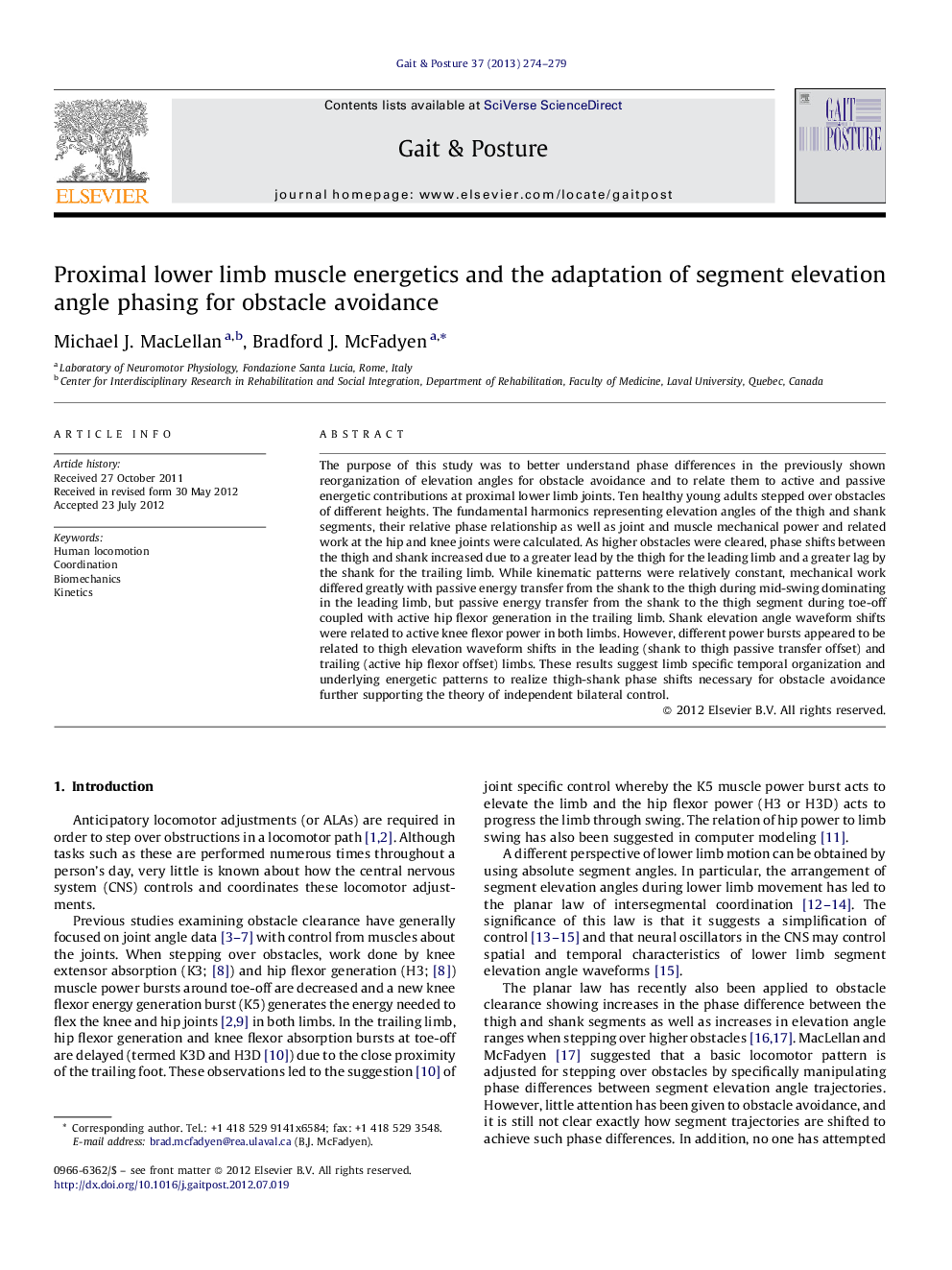| کد مقاله | کد نشریه | سال انتشار | مقاله انگلیسی | نسخه تمام متن |
|---|---|---|---|---|
| 6207960 | 1265667 | 2013 | 6 صفحه PDF | دانلود رایگان |
The purpose of this study was to better understand phase differences in the previously shown reorganization of elevation angles for obstacle avoidance and to relate them to active and passive energetic contributions at proximal lower limb joints. Ten healthy young adults stepped over obstacles of different heights. The fundamental harmonics representing elevation angles of the thigh and shank segments, their relative phase relationship as well as joint and muscle mechanical power and related work at the hip and knee joints were calculated. As higher obstacles were cleared, phase shifts between the thigh and shank increased due to a greater lead by the thigh for the leading limb and a greater lag by the shank for the trailing limb. While kinematic patterns were relatively constant, mechanical work differed greatly with passive energy transfer from the shank to the thigh during mid-swing dominating in the leading limb, but passive energy transfer from the shank to the thigh segment during toe-off coupled with active hip flexor generation in the trailing limb. Shank elevation angle waveform shifts were related to active knee flexor power in both limbs. However, different power bursts appeared to be related to thigh elevation waveform shifts in the leading (shank to thigh passive transfer offset) and trailing (active hip flexor offset) limbs. These results suggest limb specific temporal organization and underlying energetic patterns to realize thigh-shank phase shifts necessary for obstacle avoidance further supporting the theory of independent bilateral control.
⺠There is a relatively simple and organized phase shifting between thigh and shank segments suggesting focus of control. ⺠Lower limb passive and active energetic patterns are complex and dependent on obstacle height and crossing limb. ⺠Results further support previous theories of subservient muscle work and independent bilateral control.
Journal: Gait & Posture - Volume 37, Issue 2, February 2013, Pages 274-279
